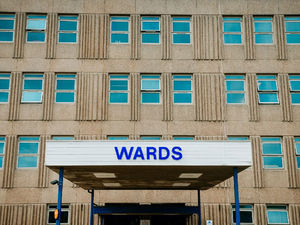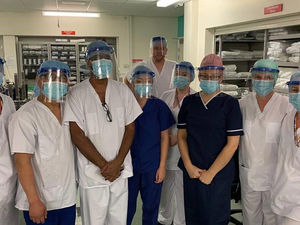Waiting list for 'routine' hospital treatment at highest point ever in Shropshire
A record number of patients were waiting for routine treatment at Shropshire's hospitals in March, figures have shown.

The size of the country's waiting list has been described as "stomach-churning" by The Royal College of Surgeons, which warned it will take years to clear.
NHS statistics show 29,651 patients were listed as waiting for elective operations or treatment at The Shrewsbury and Telford Hospital NHS Trust (SaTH) at the end of March.
It was up from 17,208 the year before, and the highest figure for the month of March since comparable records began in 2012.
At The Robert Jones and Agnes Hunt Orthopaedic Hospital NHS Foundation Trust there were 12,027 patients waiting – up from 7,176 the year before, and again the highest figure for March since records started.
Claire Skidmore, Interim Accountable Officer at NHS Shropshire, Telford & Wrekin CCG, said that the issue of treatment backlogs was being tackled by all health organisations in the county together, and that the solution could see some patients treated outside the area in a bid to get them seen more quickly.
She said: “We face a big challenge to tackle the backlog of patients waiting for planned operations or treatment that has arisen out of the Covid pandemic. This is a national, and indeed global problem and there are no easy or quick solutions.
“We are working together as a health and care system to meet the challenge. This includes working with the independent health sector to help us with our NHS lists, and securing extra capacity outside of our area where necessary, to ensure that patients are given the opportunity to be seen as quickly as possible.”
Across England, the number of people waiting to start hospital treatment rose to 4.95 million – the highest total since records began in August 2007.
The Royal College of Surgeons said the task ahead for NHS workers was vast following an "unimaginably difficult year".
Vice president Tim Mitchell said: “With the number of Covid-19 patients in hospital at the lowest it has been since September last year, the recovery of planned surgery is fortunately now well underway.
"Still, any prospect of chiselling down the waiting list, which is now 5 million people, is premature, because new patients are presenting daily.
'Running on fumes'
"The task ahead is vast and many of the staff that support surgeons to operate, anaesthetists and nurses, are running on fumes after an unimaginably difficult year helping out on Covid-19 wards.”
NHS rules state that patients referred for non-urgent treatments under the care of a consultant should start treatment within 18 weeks.
But the figures also show 3,271 patients on waiting lists at SaTH at the end of March had been waiting for at least a year – 11 per cent of all those on the waiting list.
At the orthopaedic hospital it was 1,551 – 13 per cent of those on the waiting list.
The number of people waiting this long across England has risen to 436,100, up from 387,900 the month before and a record for any calendar month since August 2007.
The figures were released on the same day the NHS announced it will spend £160 million on an initiative to find new ways of tackling the vast backlog of care.
Money will be given to hospitals for mobile scanning trucks, carry out surgery in evenings and at weekends and to provide "virtual wards" where patients can be continually monitored while outside hospital.
NHS chief operating officer Amanda Pritchard said: "The additional support announced today will help us create a blueprint for continuing that progress over summer and beyond, in a way that doesn’t heap extra pressure on staff, so that as many people as possible benefit from the world class care the NHS provides.”
The investment has been welcomed by the NHS Confederation, which represents organisations in the health service.
But Danny Mortimer, chief executive of the body, said there were "bigger, bolder" moves the Government needed, like providing more capital funding to NHS trusts to take to help with demand.





